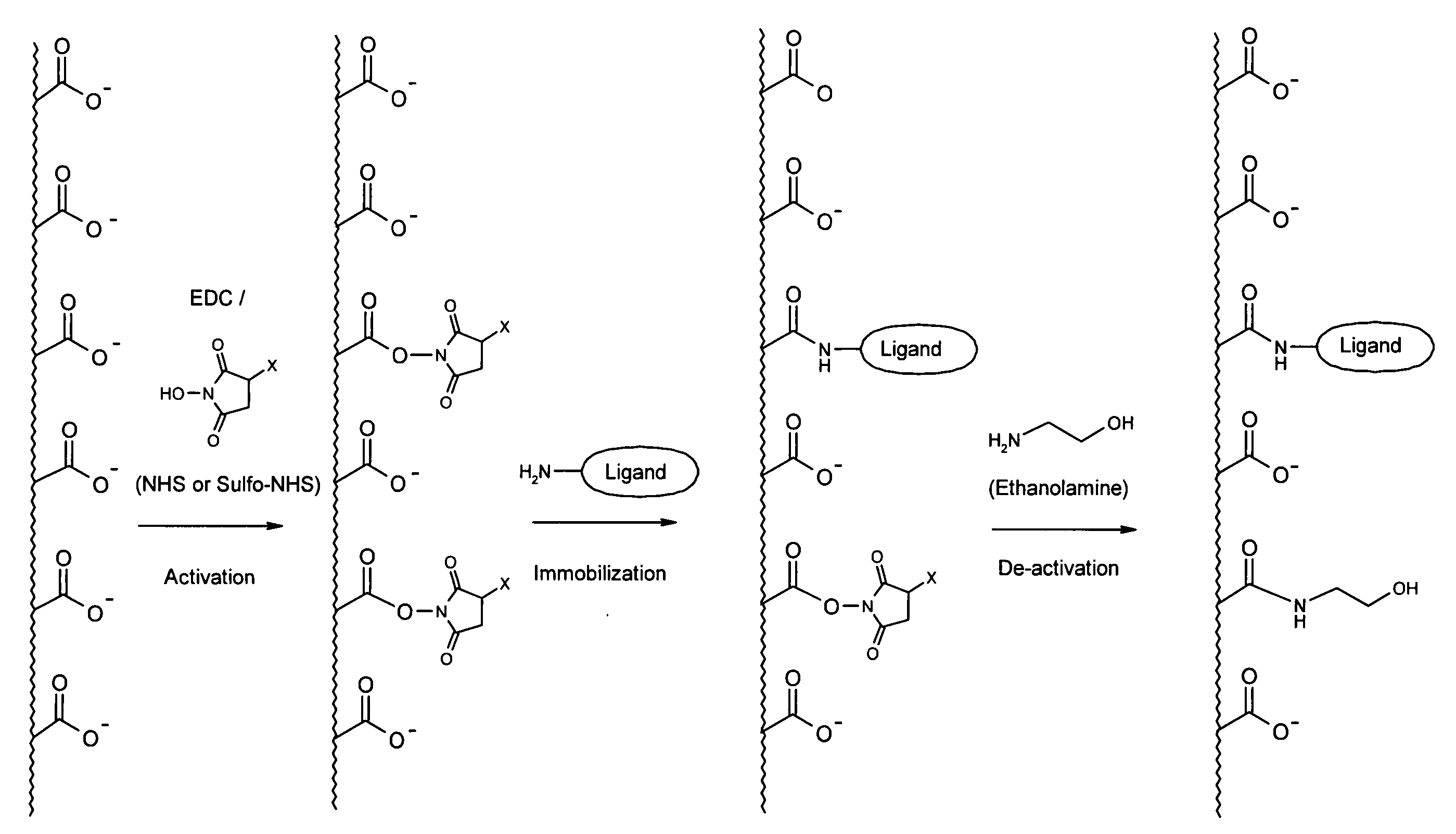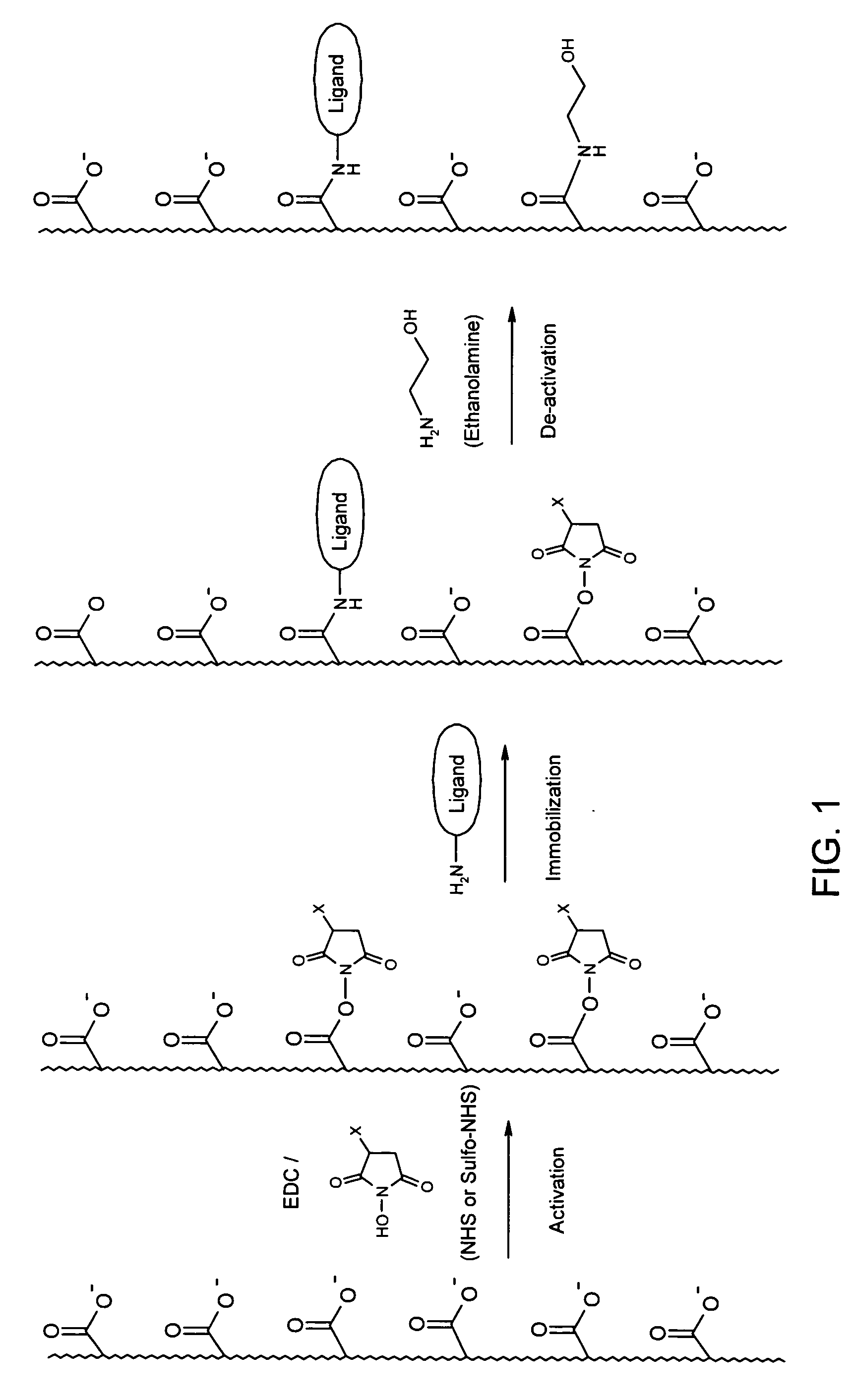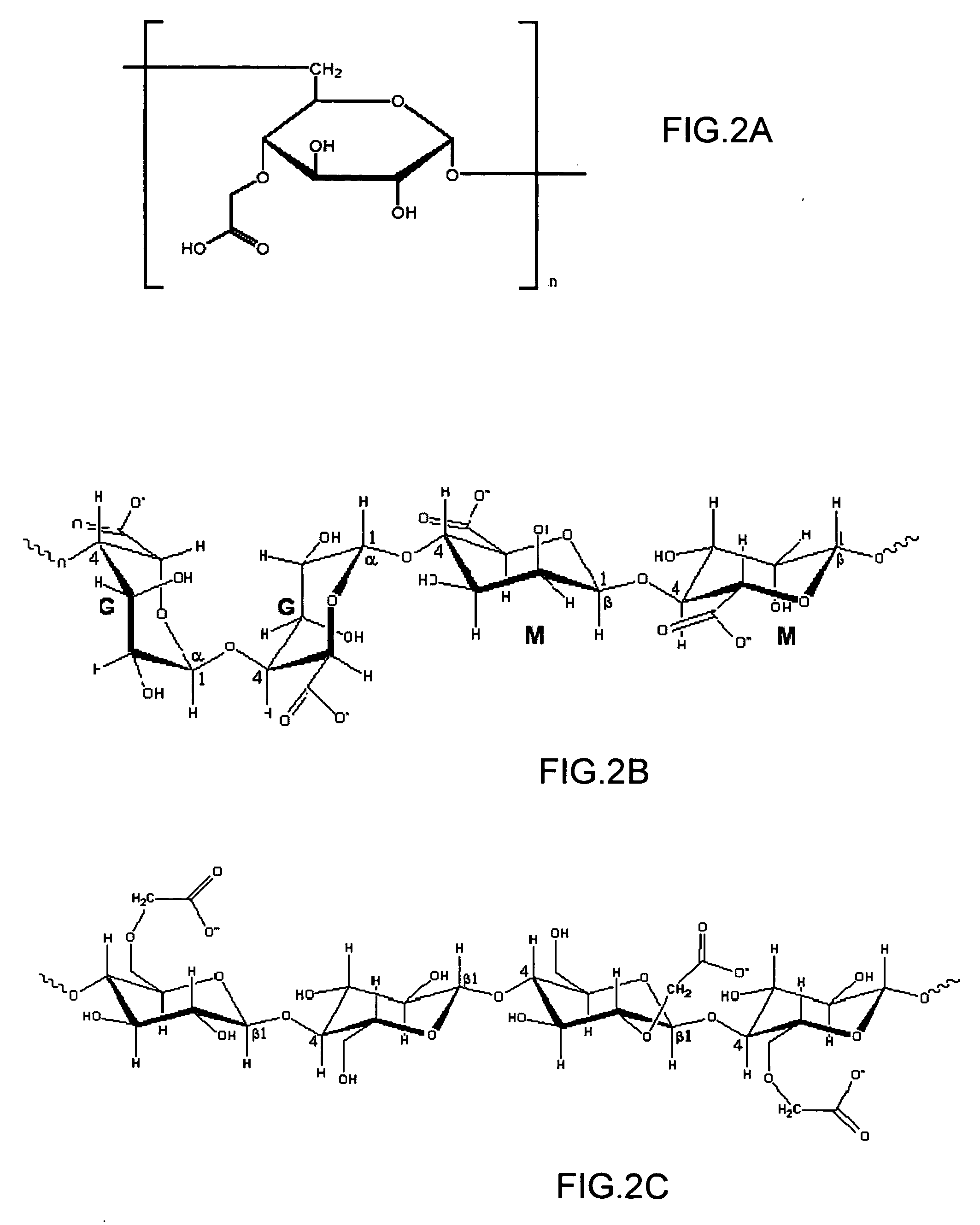Binding layer and method for its preparation and uses thereof
a technology applied in the field of binding layer and matrices, can solve the problem that the binding was practically insufficient for the performance of an interaction assay
- Summary
- Abstract
- Description
- Claims
- Application Information
AI Technical Summary
Benefits of technology
Problems solved by technology
Method used
Image
Examples
example 1
Preparation of Binding Layers
[0072] Thin layers of CMD, alginic acid, carboxymethyl cellulose or poly(acrylic acid) were attached to the gold surface of ProteOn SPR sensor chips, using a technology adopted from Langmuir 2001, 17, 8336-8340.
[0073] Briefly, each of the polymers was dissolved in aqueous solution and reacted with cystamine dihydrochloride in the presence of EDC and NHS, under conditions in which a few percent of the CGs of the polymer were modified with the cytamine dimer. Then, the cystamine disulfide bonds were reduced by tetra(carboxyethyl phosphine) and the solution was purified by dialysis. The product was an aqueoussolution of the polymer, which now contained thiol end groups enabling its attachment to the gold surface.
[0074] The sensor chips were immersed in an aqueous solution containing the cystamine-modified polymers for 24 hours. The structure of the coating was varied by changing various parameters, such as the degree of cystamine modification, the concen...
example 2
Coupling Efficiency of a Representative Protein
[0078] Table 2 shows examples of ligand densities after adsorption or immobilization of Rabbit IgG antibody to five binding layers under similar conditions. The activation procedure included exposure to a solution of 0.2 M EDC and 0.05 M NHS or sulfo-NHS (7 min injection). The adsorption / immobilization of protein were done by exposure to a solution of 50 ug / ml Rabbit IgG in 10 mM sodium acetate buffer, pH 4.5 (6 min injection). Finally, the activated layers were deactivated by exposure to 1 M ethanolamine hydrochloride, pH 8.5 (5 min injection).
TABLE 2Ligand densities after adsorption or immobilization of Rabbit IgGantibody.AdsorptionBindingBindingcapacityafterafter EDC / LayerModifi-(noEDC / NHSsulfo-NHS#Polymercationactivation)activationactivation1Poly(acrylicNone6,000 RU5,100 RU6,000 RUacid)2Alginic acidNone6,100 RU3,000 RU3,100 RU3CarboxymethylNone5,900 RU2,900 RU3,000 RUcellulose4CarboxymethylNone6,000 RU3,000 RU3,100 RUdextran2EA...
example 3
Coupling Efficiency of Low-PI Protein
[0081] It is known that proteins with low isoelectric point (PI) are difficult to immobilize. Such proteins should be dissolved in a buffer with relatively low pH to render their positive charge and thus their electrostatic adsorption to the layer. Though, at low pH values, the negative charge of the CGs in the layer itself is decreased, and therefore the electrostatic attraction is weakened.
[0082] For example, it was reported that protein pepsin, which has a PI of 3.0, exhibited only negligible binding (70 RU) to CMD layer after standard EDC / NHS activation (Anal. Biochem. 1991, 198, 268-277). The results of a similar experiment using a binding layer based on alginic acid modified with β-alanine is shown in Table 2, layer 5E. These results show a much higher binding: 750 RU after EDC / NHS activation and 2050 RU upon EDC / sulfo-NHS activation. This advantage should be related to the use of easily-activated CGs, since the adsorption capacity of lay...
PUM
 Login to View More
Login to View More Abstract
Description
Claims
Application Information
 Login to View More
Login to View More - R&D
- Intellectual Property
- Life Sciences
- Materials
- Tech Scout
- Unparalleled Data Quality
- Higher Quality Content
- 60% Fewer Hallucinations
Browse by: Latest US Patents, China's latest patents, Technical Efficacy Thesaurus, Application Domain, Technology Topic, Popular Technical Reports.
© 2025 PatSnap. All rights reserved.Legal|Privacy policy|Modern Slavery Act Transparency Statement|Sitemap|About US| Contact US: help@patsnap.com



